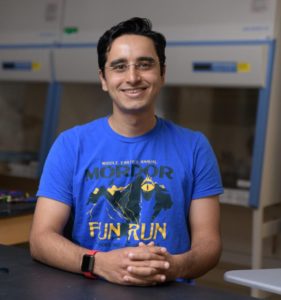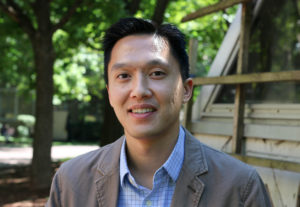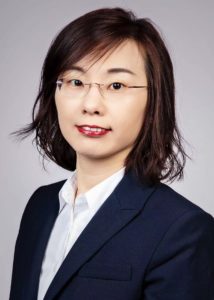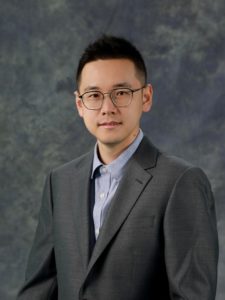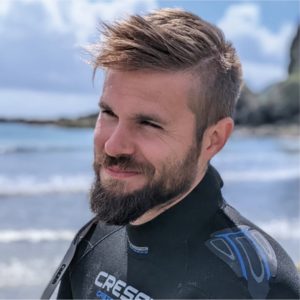 Davide received a BSc and MSc degree in Physics from the University of Padova in Italy. He then moved to the University of Warwick where he started a Doctoral Training programme in Complexity Science (2011) followed by a PhD in Physics and Complexity Science under the supervision of Prof Matthew Turner (2012-2015). His PhD thesis “Topological Interactions in Ring Polymers” received the Faculty of Science PhD Thesis Prize from the University of Warwick, the Outstanding PhD Thesis Prize from Springer Publishing Group and the Ian Ward Mcmillan Prize from the Institute of Physics, UK. During his PhD, Davide also created a new shape of pasta, dubbed “anelloni” (from the Italian word “anello” for ring). In 2016, he moved to Edinburgh where he worked with Prof Davide Marenduzzo and Prof Nick Gilbert on computational models of genome organisation and super-resolution microscopy of chromatin structure (2016-2019). After a short postdoc with Prof Dorothy Buck (Bath) on DNA topology, Davide was awarded a Leverhulme Early Career Fellowship (2019) and subsequently a Royal Society University Research Fellowship (2020). In the same year he was awarded an ERC Starting Grant to establish his group on “Topologically Active Polymers”. In 2021, Davide was awarded the Chancellor’s “Rising star” award from the University of Edinburgh and the Early Career Award in Statistical Mechanics and Thermodynamics from the RSC.
Davide received a BSc and MSc degree in Physics from the University of Padova in Italy. He then moved to the University of Warwick where he started a Doctoral Training programme in Complexity Science (2011) followed by a PhD in Physics and Complexity Science under the supervision of Prof Matthew Turner (2012-2015). His PhD thesis “Topological Interactions in Ring Polymers” received the Faculty of Science PhD Thesis Prize from the University of Warwick, the Outstanding PhD Thesis Prize from Springer Publishing Group and the Ian Ward Mcmillan Prize from the Institute of Physics, UK. During his PhD, Davide also created a new shape of pasta, dubbed “anelloni” (from the Italian word “anello” for ring). In 2016, he moved to Edinburgh where he worked with Prof Davide Marenduzzo and Prof Nick Gilbert on computational models of genome organisation and super-resolution microscopy of chromatin structure (2016-2019). After a short postdoc with Prof Dorothy Buck (Bath) on DNA topology, Davide was awarded a Leverhulme Early Career Fellowship (2019) and subsequently a Royal Society University Research Fellowship (2020). In the same year he was awarded an ERC Starting Grant to establish his group on “Topologically Active Polymers”. In 2021, Davide was awarded the Chancellor’s “Rising star” award from the University of Edinburgh and the Early Career Award in Statistical Mechanics and Thermodynamics from the RSC.
Find out more about Davide’s work via:
Group Webpage: https://www2.ph.ed.ac.uk/~dmichiel/index.html
@Dmichiel1
Read Davide’s Emerging Investigator article http://xlink.rsc.org/?doi=10.1039/D3SM01199B
How do you feel about Soft Matter as a place to publish research on this topic?
Soft Matter is becoming the go-to journal for our community. What makes it special is that it is a natural home for both theoretical/computational and experimental papers: it thus acts as a hub to gather diverse contributions that complement each other to advance the field. I am always intrigued and enthusiastic to receive the weekly newsletter and to read through the latest issue of the journal.
What aspect of your work are you most excited about at the moment and what do you find most challenging about your research?
I am excited by the fact that the field of polymer physics, a field that is perhaps even more well established than the broader soft matter, is in my opinion undergoing a major revolution. For the past 80 years, most of the community considered polymers as “passive” objects at thermal equilibrium. Recent contacts with other fields, and in particular with the genome organisation and active matter communities, completely changed this view.
I am personally deeply fascinated by how DNA, but also other types of polymeric objects, such as worms, roots, fungal hyphae and bacteria, are clearly escaping the classic rules of polymer physics as they are constantly pushed out-of-equilibrium by agents that can change their topology, morphology, length, motion, etc. In turn, the way these “active polymers” entangle is completely different from their passive counterparts. I believe that the two fields of active matter and polymer physics have just started to touch, and we will see interesting developments in the coming years –especially in terms of experiments — with potentially transformative impact in material science and genome engineering. Additionally, the use of nucleic acids as polymeric building blocks adds a further layer of informational complexity that is not present in “classic” polymer physics, and that I expect will be harnessed in the future to create new smart materials.
In your opinion, what are the most important questions to be asked/answered in this field of research?
I am personally very concerned about our planet and about what we are leaving to future generations. I believe that the most important question that we should be asking ourselves is “what are the actions that we can implement today in order to create a sustainable ecosystem?”.
Being at the heart of virtually any complex fluid and material formulation, soft matter has the opportunity to play a major role in this challenge. Thus, I would like to see the soft matter community working together with virtuous companies that are trying to push us away from fossil fuels, reformulate mass consumer products, and find smart and innovative solutions to meet our climate targets.
I believe that if we, as a community, prioritised this objective, we would make a massive difference for the health of the planet and for future generations.
Beyond choices that we can make in terms of scientific questions, I would like to take this opportunity also to call to the community to make some serious choices about the organisation of scientific meetings and international travelling. As scientists, we ought to “lead by example” and despite the admittedly irreplaceable in person interaction between colleagues and collaborators, I would like to call for the soft matter community to “lead the necessary change” in how the scientific community meets and exchanges ideas. For instance, we could organise fewer but longer meetings during the year or could organise “decentralised” meetings in multiple locations with appropriate A/V technology that allowed to connect to the other sites virtually. Sometimes I have the impression that the scientific community lives in a bubble, criticising the consumer society and voicing concerns over the climate, and yet not renouncing to jump on an intercontinental flight to go to a conference in an exotic location.
Can you share one piece of career-related advice or wisdom with other early career scientists?
I think I became a much better scientist when I realised that one has to learn from every single attempt at a theory, simulation or experiment. It is often too easy to dismiss a failed attempt as “just didn’t work”; in fact, there is no such a thing as “wasted data”. Every experiment is telling you something either about the problem you want to solve or about the way you are tackling it. You just need to be receptive, accept that mistakes happen, and be open to examine your own (and your students’) work with compassionate, and non-judgemental, criticism.













